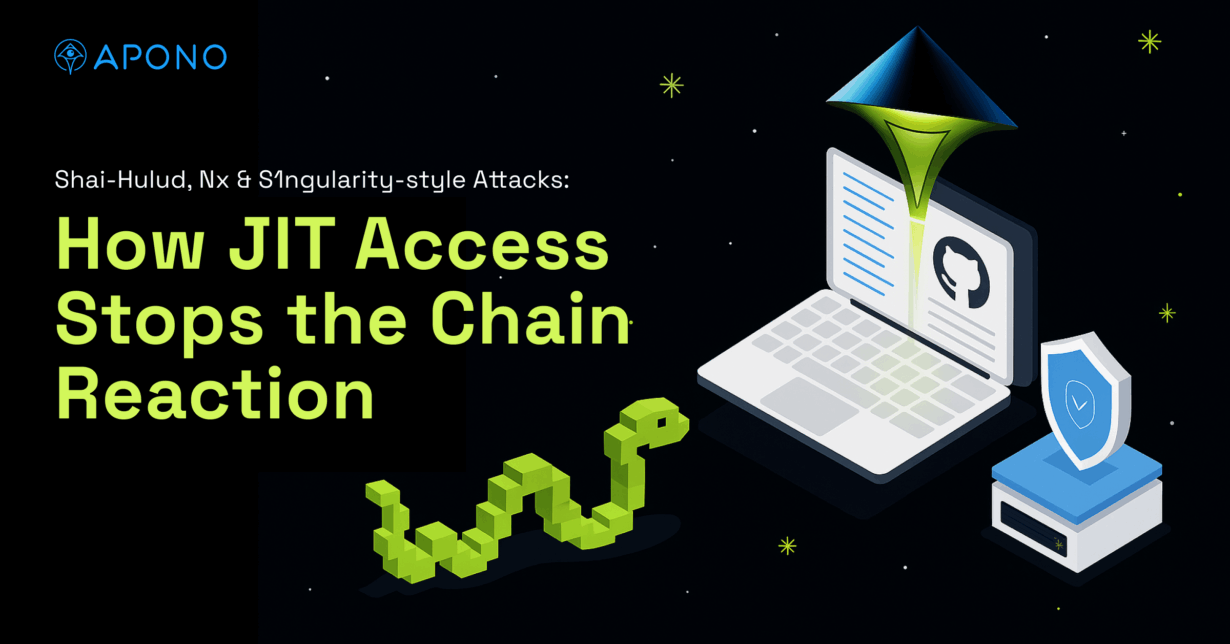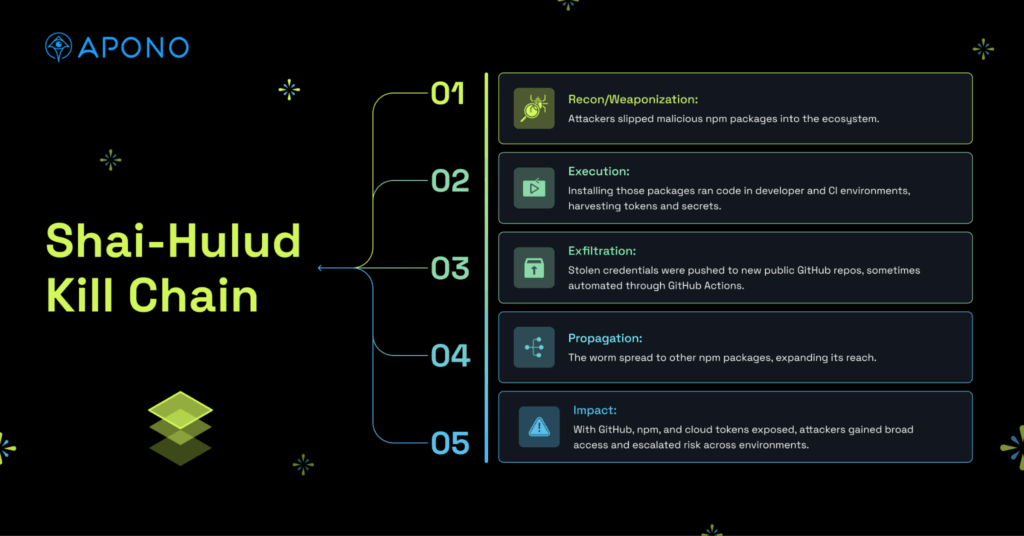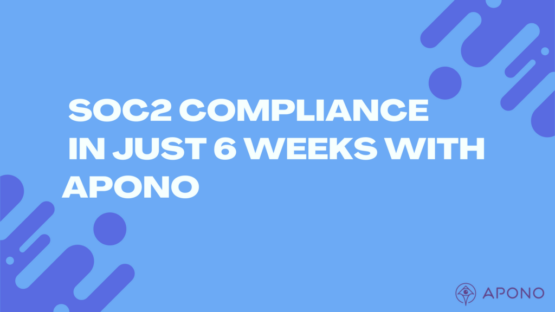Shai‑Hulud, Nx & S1ngularity‑style Attacks: How JIT Access Stops the Chain Reaction

The Apono Team
September 19, 2025

TL;DR
The Shai‑Hulud worm and the Nx / S1ngularity attacks show how token‑stealing malware, vulnerable workflows, and always‑on elevated permissions allow cascading compromise. Enforcing JIT access on repository, organization owner/admin roles, and team‑based inherited permissions sharply reduces exposure, limits damage, and strengthens audit/compliance posture.
What We Know
In mid‑August 2025, security researchers revealed the spread of Shai‑Hulud, a self‐replicating worm infecting npm packages to steal cloud service tokens, including GitHub, AWS, and GCP. The malware auto‑injects itself into other packages maintained by compromised accounts, exfiltrates secrets, sometimes exposes private repos, and even publicizes them.
Earlier, the Nx / S1ngularity attack exploited vulnerable GitHub Actions workflows to exfiltrate developer tokens and secrets. Packages belonging to high‑profile maintainers were infected; owner and admin rights were abused via owner accounts or via tokens that had broad permissions.
These incidents underscore how elevated, long‑lived, or inherited permissions are some of the biggest risk multipliers.
What We Learned from Shai‑Hulud & S1ngularity
- Token theft + workflow abuse
Shai‑Hulud uses postinstall scripts to inject malicious code into packages owned by compromised accounts. It steals tokens and uses GitHub repos (created by attackers) to exfiltrate data. In Nx / S1ngularity, vulnerable GitHub Actions workflows gave attackers a foot in the door. Attackers then leveraged workflows to get secrets and elevate privileges. - Propagation via inheritance and automation
Because developers often maintain multiple packages, compromised accounts allow auto‑spreading of the worm across many codebases with minimal manual action. - Exposed always‑on elevated roles
Sensitive roles like owner, admin, and write permissions belonging to a compromised account provide attackers broad control: publishing new versions, creating workflows that trigger on pushes, exfiltrating secrets, and making private repos public. - Lack of visibility & delayed detection
Many of these actions happen automatically or via machine‑oriented workflows. It’s often only weeks later when someone notices a repo has changed unexpectedly, or secrets have been published and the damage has been done.
Key Risks & What Organizations Are Missing
- Assuming “token theft” is only a dev risk. It can be an org risk: org owner/admin tokens get misused system‑wide.
- Over‑reliance on static access / always‑on elevated permissions. Even seldom‑used owner accounts are dangerous.
- Not validating workflows / postinstall scripts that could be malicious. S1ngularity / Shai‑Hulud used those entry points.
- Teams accumulating more permissions over time, with weak reviews. Inherited access becomes a multiplier.
Securing GitHub Actions with JIT
The Shai Hulud attack showed how quickly compromised tokens in CI/CD can be abused. With the compromised npm tokens, attackers used them to spin up GitHub Actions and automatically publish exfiltrated credentials to newly created public repos. The problem wasn’t just that secrets were exposed — it was that those secrets carried standing permissions that were always available to abuse.
If we think about this attack from a kill-chain perspective focusing on the access privileges perspective, then the component dealing with the GitHub Actions stands out as a key opportunity to reduce the potential harm from having creds published publicly.

With Apono, you can eliminate that risk. Sensitive GitHub Actions permissions — like publishing, pushing, or creating new repositories — are made requestable via Just-in-Time access. Instead of the GitHub Actions being freely available for use, they are temporarily provisioned upon validated request with the exact scope and duration required.
The result:
- Attack surface reduced — no standing privileges for attackers to hijack.
- Abuse blocked — compromised identities’ privileges cannot be outside their short JIT window.
- Productivity preserved — engineers still run their workflows seamlessly, but with guardrails that adapt in real-time.
Apono makes GitHub Actions manageable the same way it does cloud and infrastructure access: least privilege by default, elevated only on-demand.
Why JIT Access Matters More Now
Because of automation and inheritance, the real vulnerabilities multiply faster than humans can audit. Just-in-Time (JIT) access (granting elevated permissions only when needed, for the minimal required time, under controlled policies) helps in several ways:
- Shrinks the window of compromise
Even if someone gains access to a token or account, its elevated powers are only valid for a short time. The chance of them being abused is much lower. - Limits automated spread
Worm‑style propagation depends on unattended elevation and persistent privileges. If you force ephemeral/admin roles or write access to be explicitly requested and time‑bounded, automation breaks. - Increases detection & accountability
When elevated permissions require approval, logging, and automatic expiry, abnormal or malicious behaviour becomes easier to spot quickly (think of CI runs that request unusual permissions, branches or workflows being created, etc.). - Improves compliance & risk posture
Regulated industries require strong access controls and audit trails. JIT access supports least privilege and produces data to show compliance, reduces blast radius, and helps with incident response.
Securing the Three Critical Objects from a JIT Perspective
Here’s how to deploy JIT controls over these high‑risk objects in GitHub:
| Object | JIT Controls / Best Practices | Why It Addresses Shai‑Hulud / S1ngularity Risks |
| Repositories | Require elevated repo‑write or admin roles only for specific tasks and time‑boxed sessions.Monitor postinstall / workflow scripts changes and prevent unreviewed workflows being added.Make repo‑admin write privileges conditional: e.g. dual approval, MFA, etc. | Shai‑Hulud relies on compromised developer accounts injecting malicious code; automation that elevates privileges in repos can be abused. Time bounding helps limit how long a repo is potentially exploitable. Vulnerable workflows were shown to have been exploited in the S1ngularity incident. |
| Organization Roles | Limit the number of owners / admin roles. Use JIT elevation (a user requests elevated privileges, with justification, for a fixed time).Require MFA to secure approval workflows.Maintain active logging, alerts for creation / removal of owners or admin roles. | Owner/admin roles are what attackers used to propagate, exfiltrate, create repos, change visibility. In S1ngularity, tokens with owner/admin or elevated scopes allowed workflows to be abused. |
| Teams & Inherited Permissions | Use temporary-team assignments or request elevated permissions for specific time only.Disallow teams from being owners / admins unless needed; if they must be, audit their membership and actions. | Inherited permissions mean one compromised user in a team can impact many repos; teams with admin rights can act like many owners. The worm & leaks exploit exactly that scale. |
Stop the Worm at the Workflow
The Shai‑Hulud and S1ngularity incidents illustrate how access creep, static tokens, vulnerable workflows, and “always on” elevated permissions come together into a perfect storm. To protect against similar supply chain, worm‑style attacks:
- Enforce Just‑in‑Time permissions over repositories, org roles, and teams.
- Treat elevated permissions as rare, conditional, auditable events.
- Shrink the blast radius by limiting time, requiring MFA, approvals, and automatic revocation.
When you combine visibility, enforcement, and temporal constraints, even if a breach occurs, its spread and damage are contained — transforming your security from reactive to resilient.Book a demo with Apono to map your current GitHub elevated access and build JIT guardrails.





